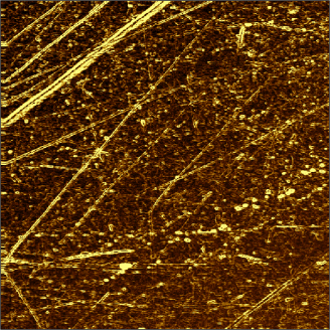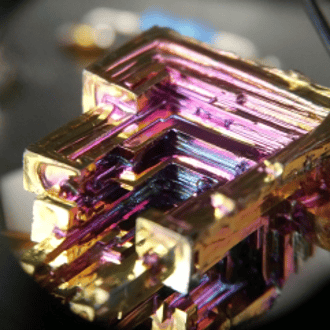Discover the capabilities of WaveMode AFM in characterizing bottlebrush polymers with unprecedented detail and speed, ...

The ultimate tool for nanoscale research from biological molecules to advanced new materials.
The versatile mid-range research AFM that grows with your demands in modes and accessories.
A compact affordable research AFM that is astoundingly easy to use, with more than 30 modes and options.
Fastest reliable sub-Angstrom surface roughness metrology.
Bringing the power of DriveAFM to a wafer metrology system purpose-built for the requirements of the semiconductor industry.
Measure roughness and other material properties of heavy and large samples up to 300 mm and 45 kg.
For unique requirements, we will design a bespoke AFM solution, leveraging our decades of engineering expertise.
Slide an AFM onto your upright optical microscope turret for a leap in resolution.
One of the smallest ever AFMs, created for integration into custom stages or existing setups.
A flexibly mountable research-grade scan head for integration into custom stages or existing set ups.
What is atomic force microscopy (AFM)? How does AFM work? What AFM modes do I really need? How do I get started with AFM?
Learn how AFM works with cantilever/tip assembly interacting with the sample. Explore CleanDrive technology, calibration methods, and feedback principles for precise nanoscale imaging.
An overview of common AFM modes. To learn about each mode in more detail and see application, view the full article.
We regularly publish detailed reviews providing practical guidance and theoretical background on various AFM applications.
Read detailed technical descriptions about selected AFM techniques and learn how to perform specific measurements on Nanosurf instruments.
A library of links to research papers in which Nanosurf instruments were used.
Learn AFM from our library of recorded webinars, covering different measurement techniques, modes, and areas of application.
Short video clips explaining how to perform different operations on Nanosurf instruments.
Watch a product demonstration to learn about the capabilities of our AFMs.
Short videos of our AFMs.
Browse news articles, press releases and a variety of other articles all around Nanosurf
Browse Héctor Corte-Léon's weekly experiments, for inspiration, entertainment, and to discover everyday applications of AFM.
By guest authors Gubesh Gunaratnam and Philipp Jung.
Gubesh Gunaratnama, Ricarda Leiseringb, Ben Wielanda, Johanna Dudekc, Nicolai Miosgec, Sören L. Beckera, Markus Bischoffa, Scott C. Dawsond, Matthias Hannigc, Karin Jacobse,f, Christian Klotzb, Toni Aebischerb, and Philipp Junga
a Institute of Medical Microbiology and Hygiene, Saarland University, Homburg, Germany
b Department of Infectious Diseases, Unit 16 Mycotic and Parasitic Agents and Mycobacteria, Robert Koch-Institute, Berlin, Germany
c Clinic of Operative Dentistry and Periodontology, Saarland University, Homburg, Germany
d Department of Microbiology and Molecular Genetics, University of California Davis, Davis, USA
e Experimental Physics, Saarland University, Saarbrücken, Germany
f Max Planck School, Matter to Life, Heidelberg, Germany
*Email: gubesh.gunaratnam@uni-saarland.de
Link to publication: Characterization of a unique attachment organelle: Single-cell force spectroscopy of Giardia duodenalis trophozoites
#Done with a FLEX: The Flexible Research AFM
The unicellular parasite Giardia duodenalis exists as a substrate colonizing active form (trophozoite) in the small intestine of humans. At the interface of substrate and cell body, it uses an attachment organelle, the ventral disc, for reversible attachment to the human host epithelium. This attachment organelle is unique to Giardia species. Relying on the function of the ventral disc, the trophozoite is capable of binding to different kinds of artificial substrates, including plain, positively charged, or hydrophobic glass. Different theoretical approaches have been suggested to describe this microbe’s mode of attachment, but until now there is no consensus. The most discussed one among them is a biophysical suction mechanism, but its existence has not been approved either. Therefore, technologies on a single-cell level are demanded that enable the description of such rarely seen attachment behaviors.
In our recent manuscript, we used the single-cell force spectroscopy (SCFS) technique, which was based on a FlexAFM (Nanosurf AG, Liestal, Switzerland) and a microfluidic control system (MFCS; Cytosurge AG, Glattbrugg, Switzerland) to study the detachment characteristics of individual Giardia trophozoites adhering to a flat glass substrate. To our knowledge, utilizing SCFS to investigate suction-based microbial attachment mechanisms is a novelty.

We combined micro-channeled FluidFM micropipettes with a 2 µm aperture and the negative pressure option of the MFCS, with the FlexAFM set-up and its inverted microscope integration for a correlative SCFS technique to approach Giardia attachment on a single-cell level. We could successfully determine important AFM parameters: The adhesion force, de-adhesion work, localization of the adhesion force (L-Fadh), and the cell detachment length.
During the retraction phase of the FluidFM micropipette and the pulling of the trophozoite from the flat glass surface, we observed a distinct major bond rupture of the trophozoite. This major peak corresponded to the maximum adhesion force and L-Fadh. For this type of attachment, we found an average maximum adhesion force of 7.7 nN. On the other side, the force signature during the detachment of adherent Candida albicans and spread- out adherent human keratinocytes were completely different. Representative force curves of C. albicans showed a characteristic pattern with multiple peaks of different forces, indicative of multiple molecular bond breakages at the interface of cell and substratum. There was no correlation between L-Fadh and the cell detachment length. Force curves of keratinocytes had maximum adhesion forces which were always followed by smaller detachment events and forces. Both types of retraction curves were clearly not the case for G. duodenalis trophozoites. In contrast, the close correlation between L-Fadh and the cell detachment length demonstrated an undescribed attachment mechanism for G. duodenalis.
In conclusion, our SCFS-based study is a new approach to describe the microbial detachment characteristics and attachment forces of the parasite G. duodenalis. Our results are compatible with a suction-based attachment mechanism but are incompatible with a significant contribution of cell-surface-ligand receptor interactions that define adhesion processes of other eukaryotic/prokaryotic cells. This work paves the way for studying attachment characteristics based on the FlexAFM-based FluidFM set-up also of other parasitic cells that might follow their own rules of attachment modes.
To read more:
Determining mass of individual micron-sized particles using PicoBalance and FluidFM® probes

28.10.2025
Discover the capabilities of WaveMode AFM in characterizing bottlebrush polymers with unprecedented detail and speed, ...

27.10.2025
Read this blog and discover advanced alloy engineering and cutting-edge AFM techniques for high-resolution, ...

14.10.2025
Discover how WaveMode technology resolves the tobacco mosaic virus structure under physiological conditions with ...

18.04.2024
FridayAFM: See how one of our Industrial AFMs can be used to look at the surface of mobile phones.

28.03.2024
Explore the world of AFM experiments with bismuth oxide layers in this blog post. Learn about electrical measurements ...

21.03.2024
FridayAFM: Point contact diode on lead sulfide.
Interested in learning more? If you have any questions, please reach out to us, and speak to an AFM expert.
